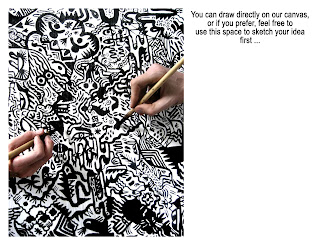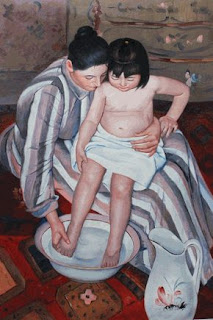SUMI INK PROJECT
What is SUMI INK? Sumi is black ink made from a mixture of plant soot and glue solidified into sticks or cakes the ends of which are scraped or ground into water on an ink slab, much used by calligraphers and painters (Sumi).Here is a great link to learn more about sumi ink, brushes and materials:
http://www.sumiesociety.org/whatissumie.php (Jaranson).
Our Project Poster and Invitation:
Our Sumi project was an assignment for our Drawing II (advanced) class. I think it was a success. I got quite a bit of feedback from our event as many of the participants were friends, and coworkers. As every project, some comments were positive and some not as positive but I know everyone enjoyed the project. Daily Messenger reporter Denise met with us in the Wood Library and wrote an awesome article about our upcoming project:
Here is what I found out. All participants enjoyed the projects. Some thought it was a great way to get away everyday busy times, some just wanted to be part of this piece and become timeless artists. Others, and there are quite a few, truly enjoyed the projects so much, they dusted of their old drawing and painting gear and picked up painting again! Some participants really felt the connection with others by adding a mark of their own.
There were a few people that wished to have more time to think and practice, rather than being handed a brush and paint. Several people were not comfortable with thick brush, but they were simple handed a brush and paint and they kind of felt lost. I remember we agreed on handing brushes dipped in the ink, but people ended up holding the cups and causing runny drips, which covered other people's artwork. I feel we should have more control over it. Many of these people have never painted with an ink, and it would be helpful to just hand them the brushes. All in all, I think the project went well.
We rotated the canvas. It was a great idea! Some painters had a hard time painting that way, once they saw other pieces painted (just and observation). As far as drawing over other people's work.... I feel this got a little out of hands at the end. There were drawings that got completely covered, or changed into something completely different. Yes, adding on to complement is fine, but taking what was there and repainting over it and covering the entire drawing of someone else's was just not nice. Some people came back and their mark was gone and someone completely painted over it. Again, it's all about controlling the project and enforcing the rules, if there should be any.
I cannot thank enough to our community and their generosity. I knew Canandaigua is awesome and very generous. I am beyond thankful to the Wood library for hosting out event, Mary from Michaels for reaching in her pocket and covering the cost of our canvas, Walmart for providing us with a gift card to purchase, ink, and cleaning materials, Canandaigua carpets for giving us a nice piece of carpet rather than using a drop cloth, and a friend for purchasing brushes for our event. Reaching out to the local news paper was a great idea as well. I am still being approached by people, talking about this project, saying what a great asset this was for the local community. I am truly grateful.
At the end, I feel this was a very important project and I learned so much from it! Some of us never even heard of a sumi ink projects and creating a public event with something we are not familiar with and succeeding is a HUGE SUCCESS on it's own. We all made mistakes, and learned! Even our collaboration... I feel it's great we didn't agree on all terms.... it shows all of us have different opinions, different style, different standards and the obstacles are make us think more and work harder. On the other hand, being and artist and collaborator is extremely hard and I learned that about myself for sure! I have a long way to go and many things to learn!
Here is our final project!
Denise, our reporter published another article after the event:
References:
"Sumi." Dictionary.com, Dictionary.com, www.dictionary.com/browse/sum. Accessed Aug 8, 2018.
Jaranson, Carla. www.sumiesociety.org/whatissumie. Accessed Aug 8, 2018.









































